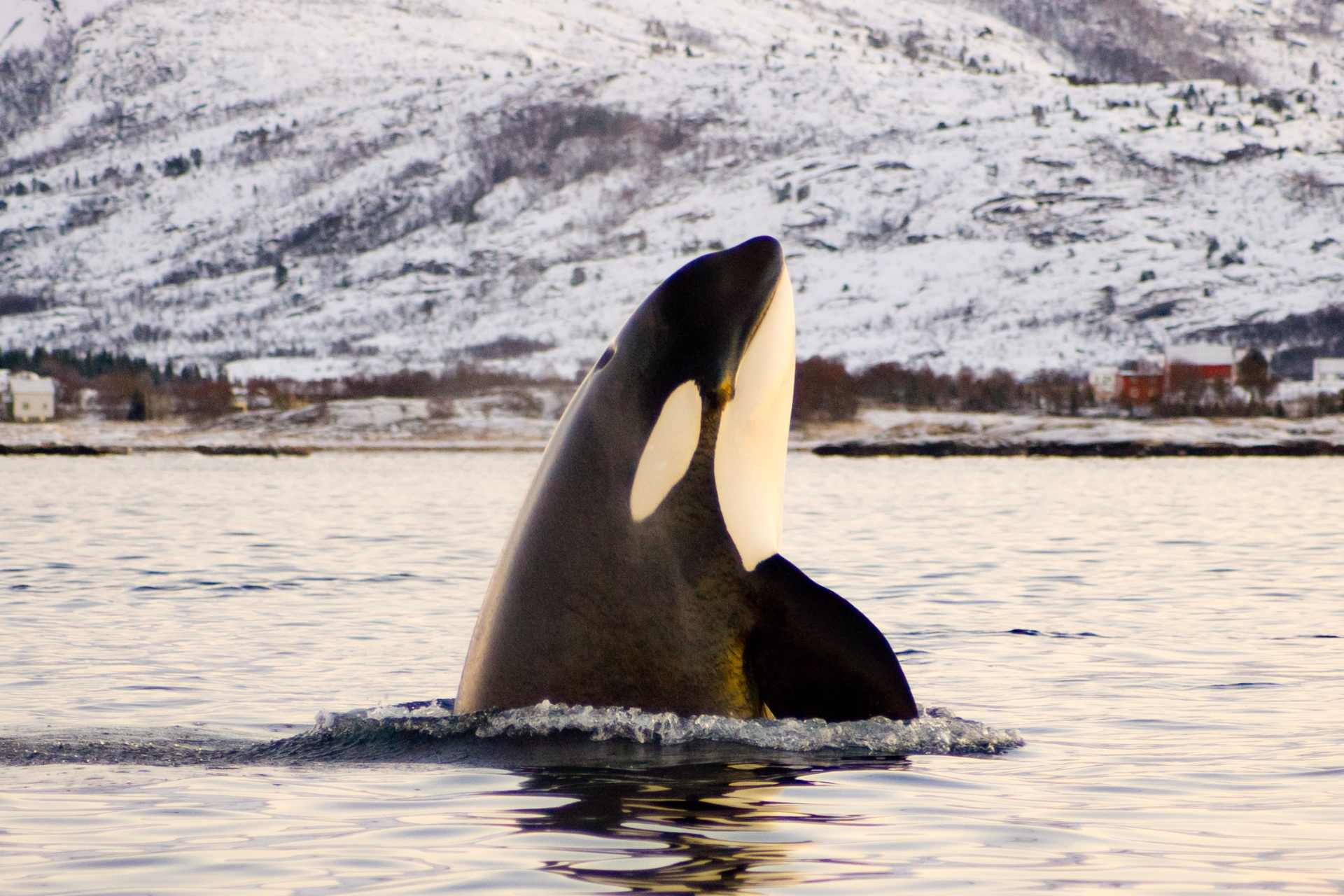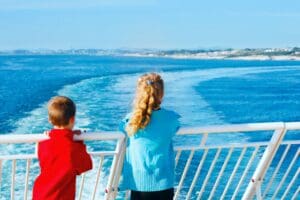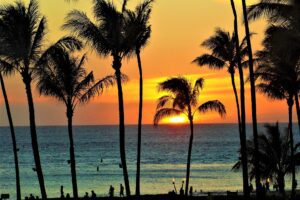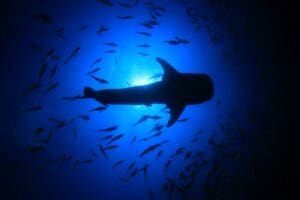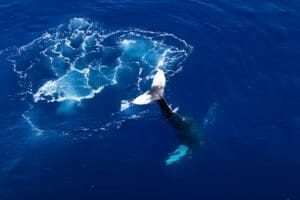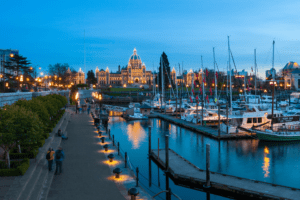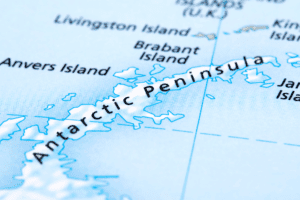Orca Tours Iceland: A Guide to Responsible Whale Watching
Iceland’s dramatic landscapes and pristine waters offer a unique opportunity to witness one of the ocean’s most intelligent predators in their natural habitat. Orca tours in Iceland provide a chance to observe these magnificent creatures, also known as killer whales, against the backdrop of stunning fjords and snow-capped mountains. These tours are led by experienced guides who ensure that visitors not only enjoy the spectacle but also learn about the orca’s behaviors, social structures, and the local ecosystem.
Traveling to Iceland: Key Questions Answered
Do they speak English in Iceland?
Yes, English is widely spoken in Iceland, especially in tourist areas, hotels, restaurants, and shops. Icelandic is the national language, but the majority of Icelanders speak English fluently.
What is the best month to visit Iceland?
The best month to visit Iceland depends on what you want to see and do. For mild weather and access to most tourist attractions, June to August is ideal. For the Northern Lights, visit from September to March.
Is Iceland very expensive?
Yes, Iceland is considered one of the more expensive countries to visit. Costs for accommodation, food, transportation, and activities can be higher than in many other destinations.
Why is Iceland so popular for tourists?
Iceland is popular for its stunning natural landscapes, including waterfalls, glaciers, geysers, hot springs, volcanic landscapes, and the opportunity to see the Northern Lights. Its unique geography and accessible outdoor adventures make it a magnet for tourists.
What month is the Northern Lights in Iceland?
The Northern Lights, or Aurora Borealis, can typically be seen in Iceland from late September to early April, with peak visibility from December through February, when the nights are longest.
How many days in Iceland is enough?
To explore the highlights of Iceland, including the Golden Circle, South Coast, and Reykjavik, a minimum of 7 to 10 days is recommended. This allows for a more relaxed pace and the opportunity to see a variety of landscapes.
What is the temperature of Iceland by month?
Iceland’s temperature varies by month, with average temperatures ranging from about -1°C to 1°C (30°F to 34°F) in winter (December to February) and 10°C to 13°C (50°F to 55°F) in summer (June to August).
Do the Northern Lights happen every night in Iceland?
No, the Northern Lights do not happen every night in Iceland. Their visibility depends on solar activity and weather conditions. Clear, dark skies are needed to see the lights, making them more likely to be seen during the winter months.
During specific months, the orca population migrates to the Icelandic waters, making it possible for tourists to get an up-close experience with these marine mammals. The tours usually set off from areas known for higher chances of sightings, such as the Snæfellsnes Peninsula, renowned for its diverse wildlife and breathtaking scenery. Here, passengers can have the memorable experience of witnessing orcas in their pods, socializing, hunting, or showing off their acrobatic skills just a short distance from the boats.


The sustainable approach to whale-watching ensures that the orcas are not disturbed while providing an educationally rich experience for those on board. Knowing when and where to embark on these orca whale watching tours enhances the likelihood of a sighting, as Icelandic tour operators are in tune with the orca movements and respectful of their natural behaviors. With an emphasis on conservation and respect for wildlife, orca tours in Iceland offer an unrivaled opportunity to connect with the natural world in a profound and memorable way.
Discovering Iceland’s Marine Sanctuaries


Iceland’s marine sanctuaries are a testament to the country’s dedication to preserving its unique marine wildlife. These sanctuaries are crucial for studies and provide exceptional opportunities for whale watching, especially the magnificent orcas.
Unique Whale Habitats
Iceland’s waters serve as vital habitats for a range of whale species, making it one of the most spectacular locations for encountering these majestic creatures in their natural setting. Whale watching tours often explore areas where the cold Arctic waters mingle with the warmer streams of the Gulf Stream, creating rich feeding grounds. This confluence is why species such as the orca, humpback, and minke whales are frequently sighted.
Iceland’s Prime Whale Watching Seasons
To maximize the chances of witnessing whales in their natural surroundings, it is important to visit during the prime whale watching seasons. Orca sightings are particularly common from April to October, when they are drawn to the bountiful waters abundant with herring. The summer months offer almost 24 hours of daylight, allowing extended periods for observing the diverse wildlife, while the winter season provides the incredible backdrop of the Northern Lights – making any whale watching experience truly unforgettable.
The Majesty of Orcas in the Wild
Experiencing orcas in their natural habitat reveals the impressive complexities of their existence. These apex predators, also known as killer whales, demonstrate fascinating behavioral patterns and interact dynamically with various marine species.
Orca Behavior and Social Structure
Orcas exhibit a sophisticated social structure, comprising tightly-knit family groups called pods. Each pod exhibits unique dietary preferences and vocal behaviors, which are passed down through generations, much like human cultural traditions. These mammals are not only skilled hunters but also show complex emotional and social bonds. Pods are often matrilineal, with leadership roles typically assumed by older females.
In their natural environment, orcas work cohesively to locate and corral schools of fish or even hunt larger prey like pilot whales. They employ a range of strategies, from stunning fish with powerful tail slaps to seaside stranding techniques where they temporarily beach themselves to capture seal pups.
Interaction of Orcas With Other Marine Species
Orcas interact with a variety of species in their ecosystem, often assuming the role of apex predator. Their diet is diverse, eating everything from small fish to larger marine mammals, including seals, dolphins, and even other whales. These interactions emphasize the orcas’ crucial role in maintaining the health and balance of their marine environment.
While orcas are at the top of the aquatic food chain, their relationship with other species isn’t solely predatory. They have been observed engaging in what appears to be playful behavior with dolphins and other whales, exhibiting a sense of curiosity and intelligence that is admired by researchers and enthusiasts alike.
Orca Watching Tours and Packages


Orca tours in Iceland offer an unparalleled opportunity to witness killer whales in their natural habitat. These tours are usually boat-based excursions led by experienced guides.
Choosing the Right Orca Watching Experience
When selecting an Orca Watching Tour, potential visitors should consider the tour’s duration and the type of boat used for the adventure. Most tours operate from the Snæfellsnes Peninsula, giving tourists an excellent chance to observe orcas in the wild. The Orca Whale Watching on Snaefellsnes tour, for instance, runs for about 3 hours, offering not just sightings of orcas but also professional guiding and warm overalls for comfort.
What to Expect on an Orca Tour
During a whale watching tour, guests are likely to encounter majestic orcas as well as other marine wildlife. Tours can vary, but operators like Láki Tours emphasize the potential sightings of sperm whales and pilot whales along Snaefellsnes Peninsula—renowned as one of the best places to see orcas in Iceland. Visitors must prepare for the cold ocean climate and should expect an educational and breathtaking experience.
Seasonal Migration and Viewing Opportunities


The migratory patterns of orcas and local marine life offer distinct viewing opportunities throughout the year, with peak seasons providing the best time to see orcas in Icelandic waters, particularly around the Snæfellsnes Peninsula.
Best Times for Orca Sightings
Spring and early summer are prime times for orca sightings in Iceland. During these months, especially from February to early July, the orcas are more frequently seen due to the abundance of their primary prey, herring. Sightseeing tours during this period are likely to witness orcas in action, with Whale Watching Snaefellsnes being a highly recommended operator.
- Winter: A slight chance to see orcas; considered a wonderful surprise.
- Spring/Early Summer (February – July): Optimal time for sightings.
- Fall: Fewer sightings as orcas move to follow prey migrations.
Migration Patterns of Local Marine Life
The migration patterns of marine life like the humpback whales play a crucial role in influencing orca movements. As these large mammals migrate through Icelandic waters, they impact the presence of orcas. In the winter, orcas are drawn to the shores by the promise of herring and follow the migrating fish schools. As seasons shift, sightings can extend into summer but are typically less frequent as prey disperses and orcas roam wider areas.
- Humpback Whale Migration: Influences orca presence, following shared food sources.
- Orcas’ Prey Movement: Dictates the likelihood of sightings in various seasons.
Orcas’ migratory habits revolve around the abundance of food, making the connection between their movement and the seasons clear and predictable to an extent.
Embarking From Snaefellsnes Peninsula


The Snaefellsnes Peninsula is renowned for its marine wildlife, particularly orcas. Two key elements must be considered when embarking on a whale watching expedition here: the region’s position as a marine exploration hub and the reputable tour operators available.
Snaefellsnes: A Hub for Marine Exploration
The Snæfellsnes Peninsula is not just a stunning feature of Iceland’s geography; it is also a prime location for observing marine life, especially orcas. Located to the west of Iceland and home to the Snæfellsjökull glacier, the environment provides a rich feeding ground for the whales, making it an ideal departure point for marine exploration.
Local Orca Tour Operators
- Láki Tours
- Location: Operates from Ólafsvík during summer.
- Unique Offering: Opportunities to see orcas and sperm whales. They are known for small-group tours that provide an intimate experience with nature.
- Availability: February to September marks their operating duration, catering to the seasons most favorable for sightings.
Numerous local operators launch from Snæfellsnes Peninsula, known for their respect for the marine environment and expertise in locating the majestic orcas. The town of Ólafsvík serves as a frequent starting point for these excursions, offering travelers a chance to see the whales in a breathtaking natural setting.
Conservation Efforts and Marine Education


In Iceland, dedicated entities focus on preserving the marine ecosystem, and they work meticulously to provide educational resources to the public. These efforts ensure a future where people coexist with majestic marine life such as orcas while maintaining a thriving, healthy ocean.
Research and Conservation Organizations
Orca Guardians is an independent conservation nonprofit dedicated to the protection of orcas in Icelandic waters. They conduct non-invasive research and focus on areas such as the Snæfellsnes Peninsula. Their work since 2014 has been pivotal for local whale species, driving conservation efforts through in-depth knowledge and monitoring of the orca populations.
Another key player is the Icelandic Orca Project, which began in 2008. It is renowned for being the longest running orca research project in Iceland, tracking individual orcas to better understand their behaviors, population dynamics, and interactions with their environment.
Educational Opportunities for Tourists
Tourism in Iceland offers a unique chance for individuals to engage in marine education. Tour operators and research organizations provide educational material and guided tours designed to inform tourists about the importance of marine conservation. During these tours, participants can witness orcas in their natural habitat, fostering a deeper appreciation and understanding of the need for protecting these creatures and their surroundings.
Equipment and Safety on Tours
When embarking on an orca tour in Iceland, it is essential that travelers are well-prepared with appropriate gear and are informed about the safety protocols in place to ensure a secure and enjoyable experience on the sea.
What to Bring for Your Orca Tour
Travelers should equip themselves with several key items for their orca tour:
- Weather-appropriate clothing: Since tours occur outdoors and can be chilly, layering is vital. Waterproof jackets and pants are advisable.
- Footwear: Sturdy, non-slip shoes are essential for safety on the deck of the boat.
- Sunglasses and Sunscreen: Protection from the glare of the sun and water is important, particularly in summer months.
- Cameras and Binoculars: For the best viewing and photo opportunities, bring a camera with a good zoom function and a pair of binoculars.
Safety Protocols on the Sea
Safety protocols are stringent and ensure the well-being of all travelers on the orca tours:
- Life Jackets: It is compulsory for all passengers to wear life jackets, which are provided by the tour operators before boarding.
- Briefings: A safety briefing is conducted before departure, covering the layout of the boat or RIB boat, the location of life-saving equipment, and what to do in an emergency.
- Guided Instructions: During the tour, crew members guide travelers on where to stand and how to move about safely on the boat.
- Health Considerations: Travelers should inform the crew of any health issues that may affect their safety at sea.
Iceland’s Diverse Marine Life
Iceland offers a veritable feast for marine wildlife enthusiasts, presenting opportunities to observe a tapestry of aquatic species in their natural habitat. The nation’s nutrient-rich waters, echoed by the abundant presence of fish and krill, establish a thriving ecosystem where larger marine animals congregate.
Encounters With Multiple Whale Species
The coastal waters of Iceland are frequented by a variety of whale species, making it a premier destination for whale watching tours. Observers might encounter the minke whale, the most commonly sighted whale around the island, known for its curiosity towards boats. Humpback whales, easily identifiable by their long pectoral fins and acrobatic breaches, are another highlight of these tours. Both white-beaked dolphins and porpoises further enrich these marine encounters with their playful antics.
While the chance of seeing the elusive sperm whale can be a rare treat, given their preference for deeper waters, sightings are still possible, especially off the Snæfellsnes Peninsula. The pilot whale, with its distinctly long body and bulbous head, can also be observed, often traveling in large, sociable pods. The formidable fin whale, the second-largest mammal on Earth, traverses these waters as well, though it is a less frequent visitor.
Significance of Fish and Krill in the Ecosystem
At the heart of Iceland’s marine biodiversity are the smaller, yet vital, components of the ecosystem: fish and krill. These organisms form the foundation of the food chain and are critical to sustaining the higher marine predators. Krill, tiny crustaceans, swarm in massive schools and serve as a primary food source for baleen whales like the humpback and minke.
Fishing industries thrive due to the abundant presence of fish species, which also attract various marine mammals. Cod, herring, and capelin are among the fish that create a bounteous buffet for both resident and migrating whales. This intricate food web brings balance to the ecosystem, ensuring the sustainability of both the marine life population and the economic activities that depend on them.
Incorporating Whale Watching Into Your Icelandic Adventure
Whale watching in Iceland affords travelers a unique opportunity to observe these majestic creatures in their natural habitat, set against the backdrop of the country’s stunning landscapes. Carefully planning your itinerary can enhance the experience, seamlessly blending it with other Icelandic attractions.
Combining Tours With Other Activities
For those eager to maximize their stay, it’s possible to combine whale watching tours with other activities. A common pairing is a boat trip from Reykjavik to witness whales, followed by pursuing the Northern Lights; this allows visitors to experience two of Iceland’s natural spectacles in one day. Similarly, travelers might opt for a morning of whale encounters off the coastline, then spend the afternoon exploring nearby glaciers or trying their hand at fishing in the rich waters of a fjord.
- Morning: Whale watching near Reykjavik or Ólafsvík
- Afternoon: Glacier tours or fishing excursions
- Evening: Searching for the Aurora Borealis
Planning Your Icelandic Whale Watching Itinerary
Creating a whale watching itinerary is vital for those wishing to integrate this experience into their Icelandic holiday. Those visiting during peak seasons—spring and summer—will find a higher likelihood of sightings. For those on a self-drive holiday, planning routes that visit various fjords along the coastline provides multiple chances to spot different whale species. One should consider booking tours in advance, particularly when visiting popular locations like Reykjavík, to ensure availability. Here’s an ideal timeline for those dedicating a day to whale watching:
- Early Morning: Depart from Reykjavik to a nearby whale watching location.
- Midday: Engage in additional activities such as visiting historical sites or nearby natural attractions.
- Late Afternoon to Evening: Return to Reykjavik or stay within a fjord village for local holidays and potentially witness the aurora borealis if conditions allow.
By following these structured steps, whale watching can be a highlight of any Icelandic adventure, delivering unforgettable encounters with nature.
Photography and Memory Making
Whale watching in Iceland offers an exceptional opportunity for photographers aiming to capture the majesty of orcas in their natural environment. The right approach and sharing methods can greatly enhance the value of these visual souvenirs.
Best Practices for Whale Watching Photography
To secure the best photos during an orca watching tour, enthusiasts should prioritize timing, equipment, and technique. Timing is crucial, with tours operating from Olafsvik being especially promising from March to June, as indicated by Láki Tours, offering vibrant opportunities for photography. Equipment should include a reliable camera with a zoom lens to capture distant breaches and a fast shutter speed to freeze motion. Technique involves patience and stability; a steady hand or tripod can make a significant difference in photo clarity.
- Timing: March – June peak season
- Equipment:
- Camera with zoom lens
- Fast shutter speed
- Technique:
- Patience is key
- Use a steady hand or tripod
Sharing Your Experiences and Encounters
After capturing the powerful images of orcas, sharing them can inspire others and highlight the need for ocean conservation. Photographers often choose to post their pictures on platforms like a dedicated Facebook page, both to display their work and engage with a community of like-minded individuals. It’s important to be respectful and observe guidelines for responsible sharing, such as avoiding the disturbance of wildlife, when posting on social media.
Beyond Orca Watching: Unique Icelandic Experiences
Beyond the thrill of spotting orcas in their natural habitat, Iceland offers a cornucopia of unique experiences that cater to a variety of interests. From awe-inspiring landscapes to rich cultural history, travelers can enjoy an abundance of activities.
Discovering Iceland’s Landscapes and Wildlife
In West Iceland, visitors can explore the rugged Snaefellsnes Peninsula, a microcosm of the island’s diverse terrain with its glaciers, lava fields, and mountains. The Peninsula is home to the renowned Snaefellsjokull glacier, a must-see for those captivated by Iceland’s icy wonders.
Travelling further north, the coastal town of Húsavík is not only famous for whale watching but also sits close to the stunning Diamond Circle – a route that includes the massive waterfall Dettifoss and the geothermal Myvatn region. The area offers unparalleled views and opportunities to witness a variety of wildlife, including the Arctic fox, and is ideal for nature photography and bird-watching.
Cultural Moments and Historical Insights
Iceland’s saga-rich history can be witnessed through its various historical sites and museums. The Settlement Exhibition in Reykjavik, for instance, gives one a glimpse into the life of the early settlers of Europe’s northernmost country. For a hands-on historical experience, visitors can partake in a Viking feast and learn about Iceland’s storied past.
Arctic Adventures extend beyond outdoor excursions, as travelers can immerse themselves in the local culture by engaging with Iceland’s history and its people. Whether it’s through exploring the Westfjords where tales of sorcery and witchcraft linger or by visiting the fishing villages where local traditions are still alive, these experiences leave visitors with a profound understanding of the Icelandic way of life.
Frequently Asked Questions
In this section, the most common inquiries about orca tours in Iceland are addressed, helping you plan your adventure effectively.
How much does it typically cost to go on an orca watching tour in Iceland?
The cost of an orca watching tour can vary, but prices generally range from ISK 10,000 to ISK 25,000 per person depending on tour length and amenities provided.
What are the chances of seeing orcas during different times of the year, and when is it best to plan a tour?
The likelihood of seeing orcas increases from February to March and then again from September to November. The best time to plan a tour is during these peak seasons to maximize your chances of sightings.
Are there any tours available to see orcas that do not require payment?
There are no tours that offer orca watching without payment as they often include services of professional guides and equipment.
Which locations in Iceland offer the highest likelihood of spotting orcas in their natural habitat?
The Snæfellsnes Peninsula, particularly near Ólafsvík, is known for orca sightings, making it a popular spot for orca tours.
What sets the best-rated whale watching tours apart from the rest, especially for sighting orcas?
The best-rated tours are distinguished by knowledgeable guides, smaller group sizes, and additional amenities such as warm overalls or refreshments, enhancing the orca sighting experience.
Can dolphin and orca spotting be combined in a single tour in Iceland, and what should one expect from such an experience?
Yes, certain tours offer a chance to spot both dolphins and orcas on a single trip. Participants should anticipate an exciting and educational experience, learning about both species from experienced guides.

